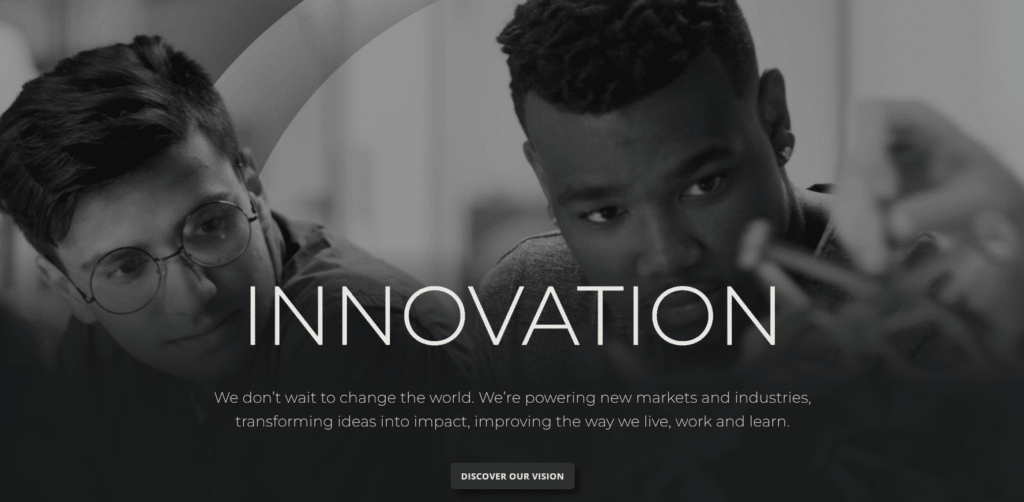Failing Forward: Higher Ed Marketing Innovation
Many schools are hesitant to adopt higher ed innovation in their marketing strategy, but the benefits far outweigh the risks. Learn how innovation can change the game for your school!
Marketing Strategies
Students and the content they create can be tremendous assets for content marketing. Authentic content may require some sacrifice of production quality, but it can be worth it in the end.
We all want to represent our education brands in a professional manner.
The best cameras, the best editing equipment, the best lighting, using scripts – all these things are great for producing exceptional content.
But when we make things look too-good-to-be-true, it can turn prospective students off from our brand.
In today’s world, filters and movie magic are available to everyone.
As a result, members of Generation Z have developed a highly sensitive “BS filter.”
They know when they’re seeing authentic content or not.
This creates a real dilemma for the higher ed marketer.
Sometimes when marketers get all gung-ho about creating work, especially content that looks “professional,” it can blur the authenticity of the message.
What I’ve been seeing over the years, is that Gen Z tends to prefer content that’s a little imperfect, which makes it come across as authentic content.
In this episode, we spoke with Nate Jorgensen, Director of Marketing and Communications at the University of Cincinnati – College of Engineering and Applied Science, about when marketers do too much work and how to let their institutions sell themselves.
Authentic content begins with the author. Who is telling the story?
As higher ed marketers, we have a good idea of what is important to our target audiences.
But only our audiences themselves truly understand what they want and what matters to them.
Nate shares how letting students tell their own story leads to authentic content.
[Almost all the work of our new] Assistant Director of Marketing, Sara Mullins, is pretty much telling us to stop doing what we’re doing – being 40-year-old people telling 17-year-olds what they should care about – to having our students tell that story. And surprise, surprise! That’s what prospective students would rather hear.
Our most successful content has been our student blog posts.
They’re not all 100% positive. And that’s great. We learn a lot from that. The authenticity of that pays off way more than being super protective.
I think anyone within higher ed knows that no institution is perfect. Once you accept that and let people share their own voice – that has resonated so much! It’s really dedicating ourselves to that authenticity that has just been a game changer for us.
We always want to put our brands in the best light possible.
But authentic content means showing our strengths and our areas of opportunity.
That’s because the story is about the students, and not so much about our institutions.
While it’s scary for us, it’s really attractive to prospective students who are looking for a place to write their own story.
I’m a big fan of student ambassador programs.
Nate shares how they leverage the power of these important programs.
We have a group of students, the ambassadors, who almost completely run our campus visits for prospective students. And they really just do it because they want to do it.
[They also help with] feedback. A lot of times on the marketing team, where we might say this, or this, “What do you think?” And they’ll say “Neither.” It’s very helpful.
Our enrollment management team really does a good job of connecting with students across majors and departments and having those students available [for focus groups]. When they connect with some of those students, they usually send them our way to say this student would be a great [help to our enrollment team]. Then, the student would do a great blog post about their experience. So [our student ambassador program] kind of just feeds itself.
This goes back to the college selling itself again. I really think that at times you do just have to let the college sell itself. Sometimes it’s detrimental to what we’re trying to do with me getting in the way and trying to do more work.
Being okay with [student-produced, authentic content] is hard at times. You always think you have to fill your day with grinding out the work. But I don’t think that’s the best strategy.

Allowing your student ambassador program to feed itself. Letting your education brand sell itself.
All this sounds counter-intuitive, but I think Nate’s on to something important.
There is a line we can cross as marketers where our brand statements can become cliché, or “salesy.”
If we’re pushing too hard, we could be driving away new students.
No one expects our institutions to be perfect. In fact, if we come across as perfect, we could come across as disingenuous.
For me, the biggest takeaway from this conversation is that we should relax a bit on the “quality” side, knowing that authentic content from students is more valuable than highly polished institutional content.
Mixing our professional content with a transparent, student-produced approach should resonate well with Gen Z prospective students and their families.
Like all of our blog post reviews of The Higher Ed Marketer podcasts, there’s so much more to learn in the podcasts themselves.
Listen to our interview with Nate Jorgensen to get even more insights into:
Set yourself free from your shrinking marketing budget with my popular ebook Marketing on a Shoestring Budget! This ebook is jammed with practical ways to produce high-quality marketing on the cheap.
Inside, I’ll show you proven marketing tactics like…
No hype. No pie in the sky. Just real solutions for getting the job done with the budget you’ve got.
Images via uc.edu and ceas.uc.edu
Subscribe to The Higher Ed Marketer podcast today!